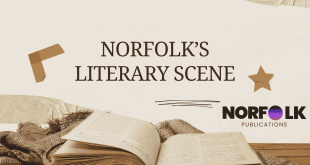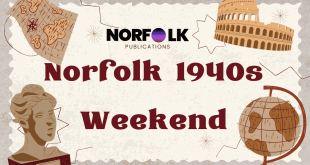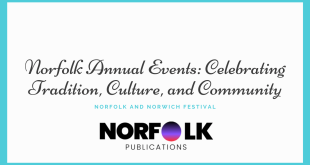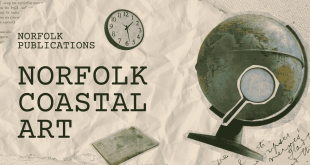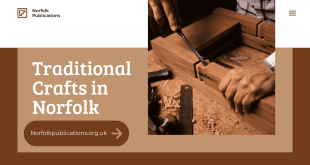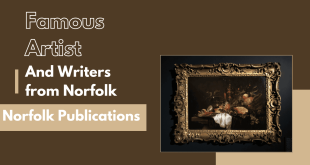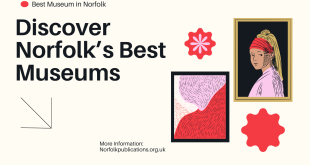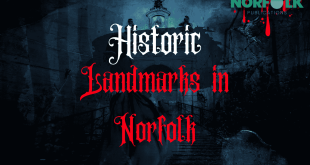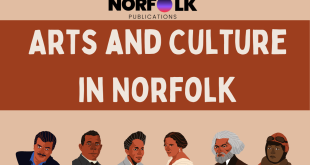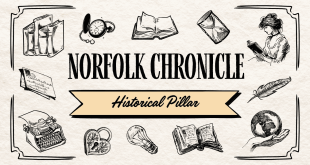Norfolk’s Literary Scene, Nestled in the east of England, Norfolk is a county rich in history, culture, and natural beauty. With its sprawling countryside, stunning coastlines, and historic towns, it’s no surprise that Norfolk has been a source of inspiration for writers and artists throughout the centuries. Norfolk’s literary scene is diverse, steeped in tradition, and continues to thrive in …
Read More »History
Norfolk 1940s Weekend: A Nostalgic Journey into Wartime Britain
The Norfolk 1940s Weekend is a beloved annual event that transports visitors back to the era of wartime Britain. Celebrated primarily in the picturesque towns of Sheringham and Holt, this event is one of the largest and most popular 1940s-themed events in the UK. Every September, thousands of visitors and locals alike dress up in authentic 1940s attire to experience …
Read More »Norfolk Annual Events: Celebrating Tradition, Culture, and Community
Norfolk, a county known for its scenic beauty, rich history, and strong community spirit, is home to a diverse range of annual events that draw visitors from all over the country. From lively music festivals to agricultural shows that celebrate the county’s rural heritage, these events provide a unique opportunity to experience the heart and soul of Norfolk. Norfolk Annual …
Read More »Norfolk Coastal Art: A Journey Through Landscapes, Light, and Inspiration
Norfolk’s stunning coastline, with its wide skies, shifting sands, and unique light, has long captivated artists. Stretching for over 90 miles, the Norfolk coast offers an endless variety of seascapes, from the dramatic cliffs of Hunstanton to the serene marshes of Blakeney. For centuries, artists have been drawn to this region to capture its natural beauty, and today, Norfolk remains …
Read More »Traditional Crafts in Norfolk: Unveiling Norfolk’s Craftsmanship Through the Ages
Norfolk is a county that has long been celebrated for its rich history, picturesque landscapes, and vibrant cultural traditions. While it is perhaps most famous for its scenic coastline and medieval architecture, the region also boasts a wealth of traditional crafts that have been passed down through generations. These crafts are not only a testament to Norfolk’s historical heritage but …
Read More »6 Famous Artists and Writers from Norfolk: A Rich Cultural Legacy
Norfolk, a county in the East of England, is known for its picturesque landscapes, historical significance, and vibrant cultural scene. Over the centuries, it has produced some of the most influential artists and writers in British history. From landscape painters who captured the serene beauty of the Norfolk countryside to writers whose works have inspired generations, Norfolk has played a …
Read More »Discover Norfolk’s Best Museums: A Cultural Journey Through History and Art
Norfolk is renowned for its stunning landscapes, rich history, and vibrant culture. With a legacy stretching back thousands of years, it’s no surprise that the county boasts some of the UK’s most fascinating museums. From ancient artifacts and medieval treasures to contemporary art and maritime history, Norfolk’s museums offer something for every visitor. Whether you are a history enthusiast, an …
Read More »Historic Landmarks in Norfolk: A Journey Through Time
Norfolk, a county in the East of England, is steeped in history and rich in cultural heritage. It is a place where ancient castles, medieval churches, grand estates, and coastal defenses tell the story of centuries past. From Roman times to the Industrial Revolution, Norfolk has played a vital role in shaping the history of Britain. With its beautiful landscapes …
Read More »Arts and Culture in Norfolk: A Rich Heritage of Creativity and Tradition
Norfolk, a county renowned for its stunning landscapes and historical significance, is equally famous for its vibrant arts and culture scene. Nestled in the East of England, Norfolk’s creative spirit is evident in its diverse range of artistic expressions, cultural festivals, historic landmarks, and literary heritage. From traditional crafts to cutting-edge contemporary art, the arts and culture in Norfolk provide …
Read More »The Norfolk Chronicle: A Historical Pillar in Local Journalism
The Norfolk Chronicle stands as one of the most significant historical newspapers in the United Kingdom, and particularly in Norfolk. Established in 1761, it has long been a source of local, national, and international news, and its pages reflect the evolving cultural, social, and political landscape of the region. With a rich history spanning over two centuries, the Norfolk Chronicle …
Read More » Norfolk Publications Publications ORG in Norfolk!
Norfolk Publications Publications ORG in Norfolk!
